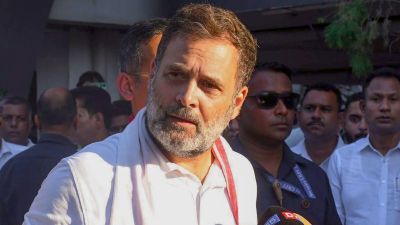PIF by World Bank for India
MUMBAI, APR 27: World Bank is preparing a Private Infrastructure Framework (PIF) for India which will identify existing constraints and m...

MUMBAI, APR 27: World Bank is preparing a Private Infrastructure Framework (PIF) for India which will identify existing constraints and make recommendations for further policy, regulatory and financial reforms to facilitate processing and financing of private infrastructure projects.
The PIF exercise was in response to a request from the government, the bank said in its latest report on global development finance. Many of the programmes the bank supports in agriculture, infrastructure, energy and social sectors increasingly rely on the private sector to deliver services.
In particular, the bank aims to promote efficient private sector development by assisting the government in identifying the remaining constraints to private investment in infrastructure, an area where the public sector alone cannot meet the ever-growing demand for services, the report said.
The International Finance Corporation (IFC), the bank’s private sector lending arm, shares with the bank the same strategic priorities for India. The report said as the focus of reforms has shifted to the states, the bank group has re-oriented its strategy to focus mainly on states which have chosen to embark on a comprehensive programme of economic reforms.
In support of this strategy, the bank is undertaking fiscal studies of all major states in collaboration with local research institutions.
The report pointed out that Andhra Pradesh is the first state to benefit from this new type of state-focused lending operation under the Andhra Pradesh economic restructuring project, which was approved in June 1998.
In the past, selection of state projects was done largely on project and sector grounds rather than the overall policy stance of the state.
The bank and IFC are now jointly developing state-level assistance programmes for states where a comprehensive programme of assistance can be structured to cover all relevant sectors and where the state government’s reform is substantially underway.
The bank said India’s central and state fiscal imbalances present a serious challenge to the country’s further development. These imbalances pose a major risk to macro-economic stability, absorb funding from the private sectors and hinder financial sector reform.
Since the major adjustment of 1991-93, further adjustments have been limited, leaving the central government’s deficit at about six per cent of GDP. At the state level, the lack of deficit reduction has put India’s states in an increasingly unsustainable position, the bank noted.
the bank said deterioration in states’ finances has been accompanied by a decline in state expenditures in such critical areas as health, education, roads and irrigation.
Concurrently, there has been an increase in spending on loss-making state enterprises and massive subsidies for power, water, irrigation and transport.
The report said some states, such as Andhra Pradesh, Haryana and Orissa, have begun to address these problems.
Major reasons for the continued large central and state deficits are the "still-narrow" tax base and heavy subsidies that often encourage inefficiency, the bank said.
Also, public sector production remains large in areas where private production would be more efficient, it said.






- 01
- 02
- 03
- 04
- 05

























